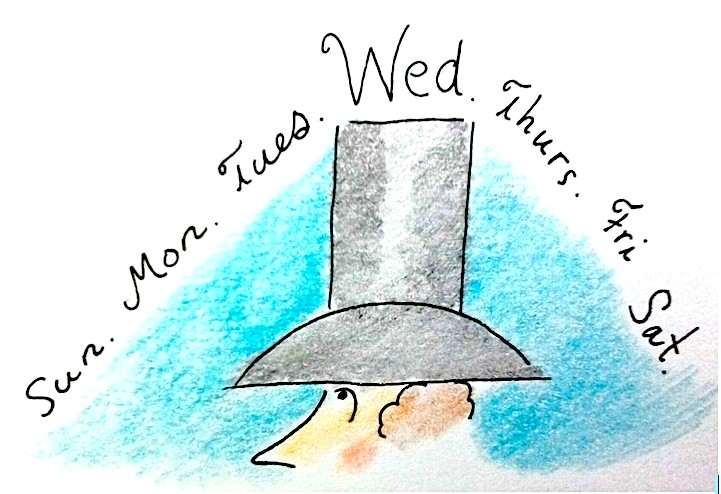Alice Harvey’s First & Last New Yorker Cartoon
 Alice Harvey’s work appeared for 18 years in The New Yorker, beginning in 1925, its first year of publication. Ms. Harvey went on to publish over 160 drawings, 3 covers, and one piece of fiction (“A Taxi-Driver Comments On The Whalen Plan”…Feb. 9, 1929).
Alice Harvey’s work appeared for 18 years in The New Yorker, beginning in 1925, its first year of publication. Ms. Harvey went on to publish over 160 drawings, 3 covers, and one piece of fiction (“A Taxi-Driver Comments On The Whalen Plan”…Feb. 9, 1929).
As Liza Donnelly wrote in her book, Very Funny Ladies, “Harvey arrived [at The New Yorker] nearly fully formed as a cartoonist, writing her own ideas…” Although Ms. Harvey would later take outside ideas, her initial work was all her own.
Harvey’s very first appearance in the magazine, in the issue of October 17, 1925, was not a cartoon, but an illustration for a story*:
Just one week later, in the issue of October 24, 1925, her first cartoon appeared:
Eighteen years later, her last New Yorker drawing appeared (the issue of May 1, 1943):
For much more on Alice Harvey, read the aforementioned Donnelly history of The New Yorker‘s women cartoonists, Very Funny Ladies.
* Just about a month after Harvey’s first New Yorker illustration, another appeared (in the issue of November 28, 1925). It sat atop perhaps the most important piece in The New Yorker‘s infancy: Ellin Mackay’s “Why We Go To Cabarets.” The piece “shocked society” (according to Ellin Berlin’s, nee Mackay’s, New York Times obit). The piece generated so much buzz that it is widely credited for helping turn The New Yorker‘s fortunes around that first year.
— Above, right: The New York Times Nov. 26, 1925, headline
___________________________________________________________________________
Remembering Bill Woodman: Mort Gerberg.
When Bill Woodman passed away last month, I asked New Yorker colleagues for their thoughts on the artist and his work. Here’s Mort Gerberg on Mr. Woodman:
The single thing that always stood out in my mind about Bill Woodman’s cartoons was what a fine, naturally funny draw-er, he was — in the tradition of really drawing funny, like George Booth, but in a style and approach all his own.
Watching him doodle was like watching a magician doing close-up card tricks; someone casually moving his hands in a few seconds and creating an illusion. Bill was totally casual. He would draw directly with a tool no more sophisticated than a felt tip pen, unhurried and effortlessly, sort of allowing the image to appear on the paper, apparently without any direction from himself. And more often than not, his initial drawings were his finishes. He wouldn’t re-draw; he’d simply start all over until he got something he liked. You can’t redraw spontaneity.
Also, equally remarkable, his drawings were made from memory. “I take a mental picture of things,” he told me, when I interviewed him and chose some of his doodles to include in my “Cartooning” book.* “I don’t sketch on the spot so I don’t become a slave to the thing. Drawing from memory is what comes out first; it’s what makes it different from others’ drawings.” Moreover, what I found especially magical was how accurate the details in them were, and yet still contained his “Woodman” versions of them.
Amazing. I greatly admired what he did, and feel fortunate to have known him and have seen him do it up close.
__________________________________________________________________________
Mort Gerberg (above) Born, March 11, 1931, New York, NY. New Yorker work: April 10, 1965 – . Co-edited, with Ron Wolin & Ed Fisher, The Art in Cartooning: Seventy-five Years of American Magazine Cartoons ( Charles Scribner & Son, 1975). Essential reading… Mort Gerberg On The Scene: A 50-Year Cartoon Chronicle (Fantagraphics, 2019).
*When Mr. Gerberg refers to his “Cartooning book” he means Cartooning: The Art and the Business (shown above) published in 1989 by William Morrow.
More reading:
The Ink Spill Interview: Bill Woodman
The Ink Spill Interview: Mort Gerberg









